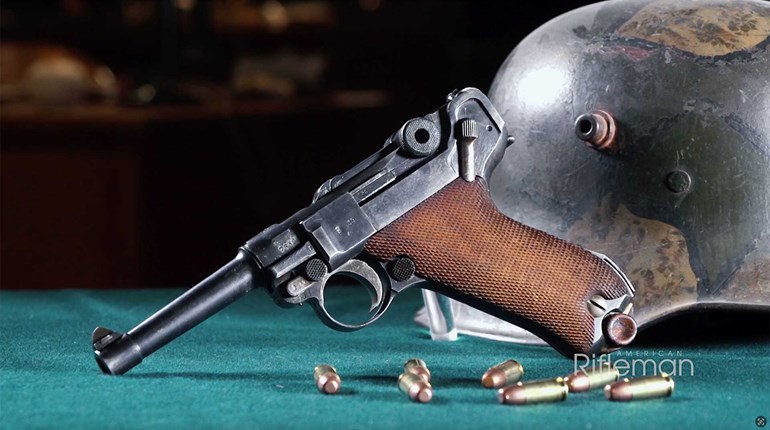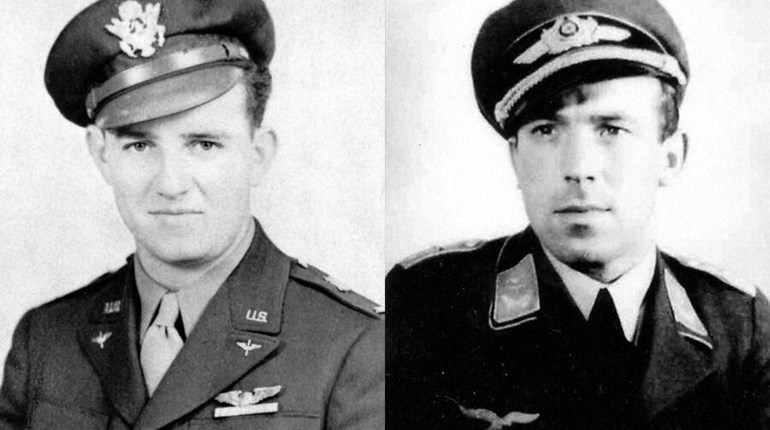
Under the heading of mere decency—and, especially in this case, justice—we often find ourselves called to remember grim anniversaries. Quite frequently, these events spotlight the bravery, selflessness and outright heroism we always hope to feature in American Warrior, though in this case not always exhibited by Americans. Such is our observation now: 75 years ago this month, the Nazi occupiers of Poland finished walling up and closing off an irregular 1.4-square-mile parcel of central Warsaw. Inside the walls were 400,000-500,000 of Poland’s 3.5 million Jews.

The Nazis did not plan for nearly 30 percent of Warsaw’s population to reside for long in only 2.5 percent of the city’s habitable area. Already primarily a Jewish enclave, it became the “Warsaw Ghetto,” one of at least 20 such coerced concentrations spread through occupied Polish cities (Poland was the first victim of blitzkrieg, or “lightning war,” the preceding September, during the opening combat of World War II).
It was also a grisly convenience for Nazis. Only 50 miles to the northeast, the twin camps of Treblinka were under construction: Camp I was an Arbeitslager (work camp) to service the existing quarry and related concrete production, and Camp II, the infamous Vernichtungslager (death camp).
Conditions inside the Ghetto deteriorated rapidly as every sort of utility or service became all-but-instantly overloaded. Every habitation was bursting, with seven or more people occupying a single room. Food was almost impossible to obtain in remotely sufficient quantities. Starvation, in the words of author Charles G. Roland, was a policy: By 1941, “official” Jewish rations were cut to 184 calories per day in the Ghetto. Only extensive smuggling and other outside assistance (some from U.S. charities) kept the internees alive. Eighty-three thousand would nevertheless die of starvation and epidemics before mid-1942.
Worse was to come. In July of 1942, Camp II at Treblinka was ready. Under the guise of “deportation” and relocation, the Vernichtungslager did its ugly work, and by September, 265,000 residents had been removed from just the Warsaw Ghetto. A comparatively healthy few were put to work instead of immediately to death, but most were destined for the “showers.” Unlike other death camps, Treblinka employed no hydrogen cyanide (“Zyklon B”)—instead, the exhaust of a tank motor, and later of two, was fed into the sealed chambers. The relative crudeness was no impairment to hideous efficiency: As many as 25,000 people could be murdered in a single 14-hour workday.
Word filtered back to Warsaw about what was really happening to those who left the Ghetto, and more organized unrest began. The Nazis put this down ruthlessly, killing another 35,000 through the summer and fall of 1942. By January of 1943, only 75,000 to 80,000 remained in the Ghetto.
Jews became determined to resist any more of the farcical “deportations,” and began to encourage their fellows not to enter the railroad cars. The Nazis responded by sending armed detachments into the streets to round up anyone they found. Ghetto residents formed underground self-defense groups like the “ZZW” (Jewish Military Union). Armed with smuggled-in firearms (mostly handguns), stolen German weapons and improvisations like Molotov cocktails, they ambushed a force of Nazis on January 18, 1943. Fighting lasted for several days, but the Germans eventually withdrew and further round-ups were suspended.
By April, Reichsführer and Holocaust mastermind Heinrich Himmler had taken a pointed interest in the Warsaw Ghetto. He was determined to end what he saw as a standoff that was consuming much-needed men and matériel. On April 19th (the eve of the Jewish celebration of Passover), Ghetto defenders were faced with tanks, artillery and seasoned SS troops to supplement local police and other collaborators. Despite this overwhelming superiority, it would take the Nazis nearly a month to clear the Ghetto. What was not destroyed by direct attack was systematically burned. They ambushed a force of Nazis on January 18, 1943. Fighting lasted for several days, but the Germans eventually withdrew …
Under Himmler’s handpicked new commander, Jürgen Stroop, another 50,000 would die: 43,000 deported, and 7,000 in the fighting. German casualties are much debated to this day; the official total is roughly 300, though this seems strangely low for a 1.4-square-mile conquest that required a month to complete against only small-arms opposition. What remained of the Ghetto was firmly under Stroop’s control by mid-May, and he sealed Nazi victory by personally blowing up Warsaw’s Great Synagogue (the largest in the world when it opened in 1878).
There was a macabre benefit to the desolation of the Ghetto—it was so complete that the Nazis were unable to effectively patrol it. As many as 20,000 Jews subsequently lived there in hiding, and avoided the horrors of Treblinka. Over a period of many months, they escaped into Warsaw and the surrounding countryside.
Against the tableau of the Holocaust, we shrink from offering much in the way of conclusions. The scale of the barbarism, the malice and the naked will to power daunt too much. It is satisfying to know that the architects—barbarous, foolish or otherwise—were largely brought to book: Hitler and Himmler, of course, by their own hands; chief Jewish collaborator Adam Czerniakow also by suicide when he learned that “deportation” was a lethal euphemism.
Stroop was another matter. Unrepentant to the end, he was sentenced to death by both the Allies and the Poles, and hanged in 1952. But while jailed in newly Communist Poland after the War, he confessed to Kazimierz Moczarski—the same Polish resistance fighter who’d been detailed to kill him during the war—the only appraisal needed for the Warsaw Ghetto warriors:
“It's all history now, and the world's gone topsy-turvy, so why not speak the truth here in our cell? The Jews surprised me and my officers … with their determination in battle. And believe me, as veterans of World War I and SS members, we knew what determination in battle was all about. The tenacity of your Warsaw Jews took us completely by surprise. That's the real reason the (action) lasted as long as it did.”


































